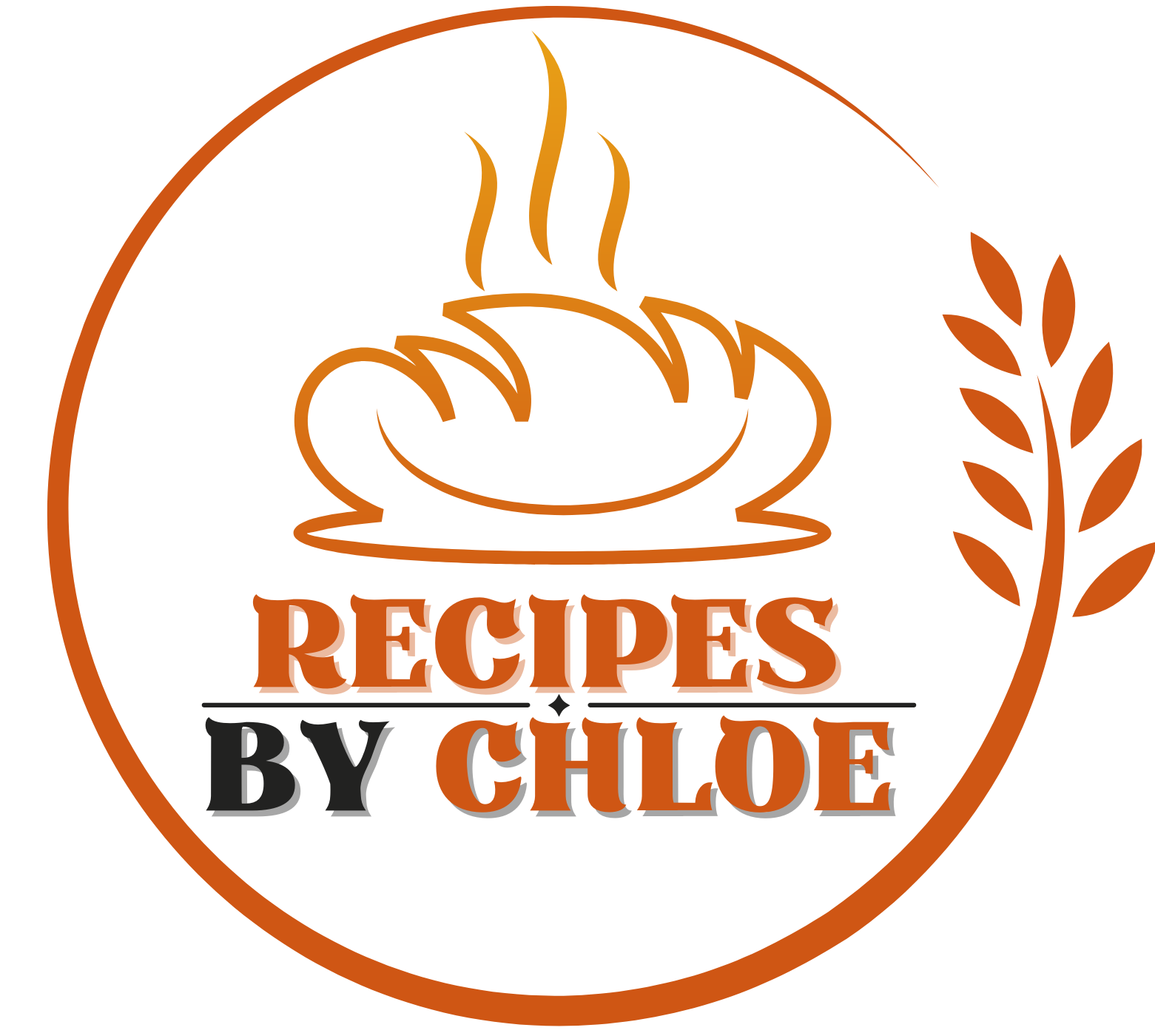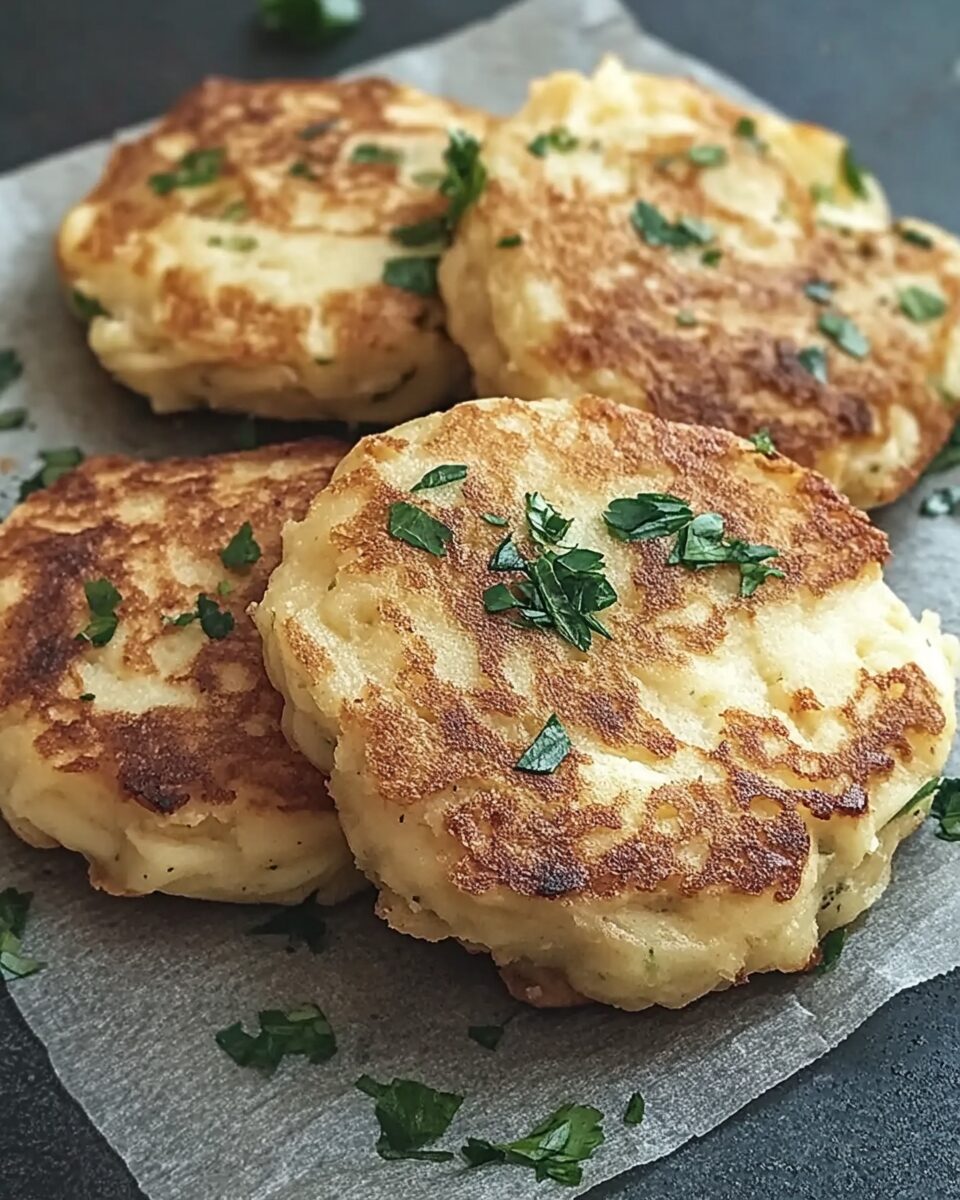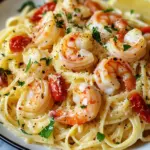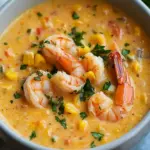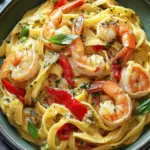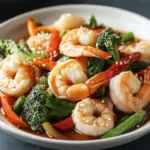Boxty is a traditional Irish potato pancake that combines both grated raw potatoes and mashed potatoes, resulting in a dish that’s crispy on the outside and tender on the inside. Often enjoyed as part of a hearty Irish breakfast or as a side dish, boxty showcases the resourcefulness of Irish cuisine in making the most of simple ingredients.
Full Recipe:
Ingredients
- 1½ cups grated raw potatoes
- 1 cup all-purpose flour
- 1 cup leftover mashed potatoes
- 1 large egg
- 1 tablespoon skim milk
- Salt and pepper to taste
- ¼ cup olive oil
Directions
- Prepare the Potato Mixture:
- In a large bowl, toss the grated raw potatoes with the flour until thoroughly coated.
- Add the leftover mashed potatoes to the bowl and mix until well combined.
- Incorporate Wet Ingredients:
- In a separate small bowl, whisk together the egg and skim milk.
- Pour this mixture into the potato blend, stirring until a consistent batter forms.
- Season the batter with salt and pepper according to your preference.
- Cook the Boxty:
- Heat the olive oil in a large skillet over medium-high heat.
- Scoop spoonfuls of the potato mixture into the skillet, shaping them into patties approximately 2 inches in diameter.
- Fry each patty until golden brown, about 3 to 4 minutes per side.
- Once cooked, transfer the boxty to a plate lined with paper towels to drain any excess oil.
- Serve the boxty warm, either on their own or with your choice of accompaniments.
Nutritional Facts
Per serving (based on 6 servings):
- Calories: 227
- Total Fat: 10g
- Saturated Fat: 2g
- Cholesterol: 32mg
- Sodium: 121mg
- Total Carbohydrates: 29g
- Dietary Fiber: 2g
- Sugars: 1g
- Protein: 5g
- Vitamin C: 10mg
- Calcium: 24mg
- Iron: 2mg
- Potassium: 305mg
The Rich History of Boxty: Ireland’s Beloved Potato Pancake
Boxty, a traditional Irish potato pancake, has long been a staple of Irish cuisine. This dish, known for its crispy exterior and soft, tender interior, is a testament to the ingenuity of Irish cooking, utilizing simple ingredients to create something truly delicious. Boxty has been enjoyed for centuries, particularly in the northern and midlands regions of Ireland, where potatoes were a primary food source.
The name “boxty” is derived from the Irish phrase arán bocht tí, meaning “poor house bread,” highlighting its origins as a dish that sustained many families through difficult times. Historically, potatoes were cheap and widely available in Ireland, making them a crucial part of the Irish diet. Boxty was developed as a way to make use of both raw and cooked potatoes, ensuring that no food went to waste.
Traditionally, boxty was made using a simple combination of grated raw potatoes, mashed potatoes, flour, and milk. It was then cooked on a griddle or pan, similar to a pancake. Over time, variations of boxty have emerged, incorporating different cooking methods and additional ingredients while still maintaining the dish’s humble roots.
Boxty’s Cultural Significance in Ireland
Boxty is more than just a meal—it is a symbol of Ireland’s resilience and culinary heritage. It is particularly associated with the counties of Leitrim, Cavan, Mayo, and Donegal, where it has been a beloved dish for generations. The dish was often prepared in rural households as a way to stretch limited food supplies, and it became a comfort food passed down through families.
In Ireland today, boxty is celebrated as a traditional dish that brings people together. It is commonly served in Irish pubs and restaurants, especially in regions with a strong cultural connection to its origins. Many Irish households still prepare boxty for special occasions, family gatherings, and even festive events like St. Patrick’s Day.
A popular Irish saying reflects just how integral boxty was to Irish cuisine:
“Boxty on the griddle, boxty on the pan, if you can’t make boxty, you’ll never get a man.”
While this humorous rhyme may be outdated, it highlights how central this dish was to traditional Irish cooking and daily life.
Different Variations of Boxty
Over time, several variations of boxty have developed, each with unique characteristics:
- Pan-Fried Boxty: The most common version, cooked similarly to pancakes in a frying pan. This results in a crisp exterior and a soft, pillowy inside.
- Boiled Boxty: A dough-like mixture that is shaped into a loaf and boiled before being sliced and fried. This method creates a denser texture, similar to dumplings or gnocchi.
- Baked Boxty: Less common but still delicious, baked boxty is prepared similarly to bread and served in slices.
Some modern adaptations of boxty include additional ingredients such as cheese, chives, bacon, or even garlic for extra flavor. Restaurants and home cooks alike have embraced creative twists on the traditional recipe, using it as a base for breakfast dishes, side dishes, or even as an accompaniment to stews and meat dishes.
How Boxty is Served Today
Boxty is incredibly versatile and can be enjoyed in various ways depending on personal preference and the occasion. In many Irish households and restaurants, it is often served with butter, sour cream, or chives. Some enjoy it as a breakfast dish, pairing it with eggs, bacon, or sausage for a hearty start to the day.
In more modern culinary interpretations, boxty is sometimes used as a wrap or sandwich base, filled with meats, vegetables, or cheese. Some restaurants even serve boxty with smoked salmon, crème fraîche, or a poached egg for a gourmet take on the classic recipe.
Whether served as a simple, traditional dish or as part of an elevated meal, boxty continues to be a favorite comfort food that highlights the richness of Irish cuisine.
Nutritional Value of Boxty
Boxty is a carbohydrate-rich dish, making it an excellent source of energy. Since it primarily consists of potatoes, it is also packed with fiber, potassium, and vitamin C. The exact nutritional content of boxty varies based on how it is prepared, but a standard serving generally provides a good balance of macronutrients.
- Calories: Moderate, depending on whether it is pan-fried, baked, or boiled.
- Carbohydrates: A high-carbohydrate dish due to the potatoes and flour.
- Protein: Contains a small amount of protein, which can be increased by serving it with eggs or dairy.
- Fat: The fat content depends on the cooking method; frying in oil or butter will increase the overall fat content.
- Fiber: Potatoes contain dietary fiber, which supports digestive health.
- Vitamins and Minerals: Potatoes are naturally rich in vitamin C, potassium, and iron.
For those looking for a healthier alternative, boxty can be made with whole wheat flour instead of all-purpose flour and cooked with minimal oil. Additionally, incorporating more vegetables into the recipe can enhance its nutritional profile.
Why Boxty Remains a Timeless Dish
The appeal of boxty lies in its simplicity, versatility, and deep cultural significance. As a dish that has stood the test of time, it remains a staple in both traditional and modern Irish cooking. Whether enjoyed in its classic form or reimagined with new flavors and ingredients, boxty continues to bring comfort and nostalgia to those who prepare and eat it.
Despite its humble beginnings, boxty has found a place in contemporary Irish cuisine, featured in restaurants and homes alike. Its popularity extends beyond Ireland, as people worldwide embrace traditional Irish food and explore ways to incorporate it into their own culinary traditions.
Conclusion
Boxty is a dish that embodies the heart and soul of Irish cuisine. With its rich history, simple yet delicious ingredients, and adaptability, it remains a beloved part of Irish food culture. Whether you’re making it for a traditional Irish breakfast, serving it as a side dish, or experimenting with new variations, boxty is a recipe that celebrates the enduring legacy of Irish cooking.
